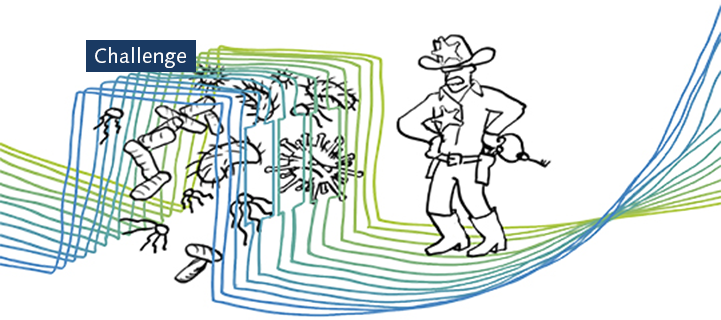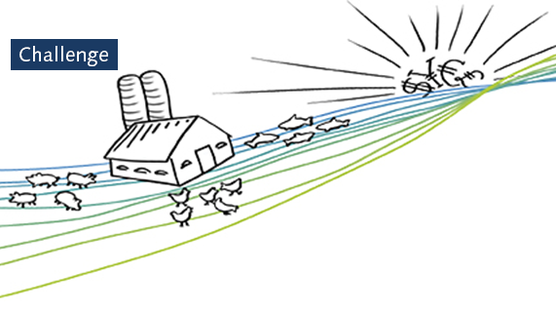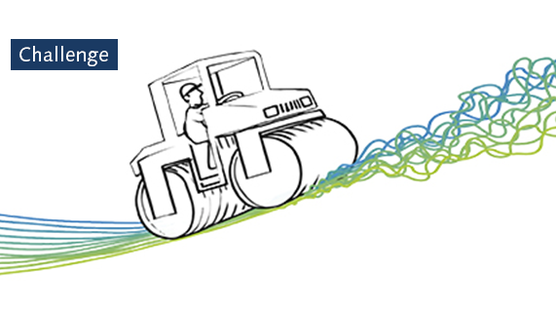
Published on May 1, 2021
Diseases threaten the protein industry
With the growing demand for food, and in particular animal protein, over the last few years, we have witnessed an increasing pressure on the use of land, water and air. At the same time, the global nature of our world also brings increased movement across the different livestock sectors, and related to that, a focus on animal health. Managing animal health to prevent diseases is a difficult and cumbersome task. But it is absolutely necessary to protect the capital value animals represent, safeguard the return on investment of producers, and most importantly, protect our source of food.
The global burden of animal diseases
Livestock health and productivity are negatively impacted by the presence of endemic and emerging diseases. In response, hundreds of millions are invested globally to prevent disease and improve livestock health and productivity. Traditionally, cost-analyses focus on the direct costs of animal disease. However, this often fails to capture the wider, dynamic market impact. Livestock diseases contribute not only directly to losses via increased mortality, reduced productivity, control costs, but also loss in trade, decreased market value, and food insecurity. These market disruptions are normally felt well after an initial disease outbreak.
The global burden associated with the emergence and re-emergence of animal diseases is increased by a variety of factors like climate change, migration, and the growth of livestock production and trade. Despite some successes, progress in the control of animal diseases continues to be an issue in many countries.

The economic impact of animal diseases
Over the last decade, the direct cost of zoonotic diseases has been estimated at more than $20 billion and indirect losses at over $200 billion to affected economies. This is just an estimation since economic analysis for animal diseases are not always available and rarely conducted in developing countries. The size of market losses following disease outbreaks also depends on the countries' trade profile. Net exporting countries face larger and more prolonged financial impacts than importing countries. A single outbreak of a livestock disease in an exporting country can lead to long-term changes in market shares because importers explore new sources for the products. Consensus from economists is that for every million birds lost, there is about a 1.6 percent price increase in eggs. Quantifying the economic impact of an animal disease outbreak is important in support of prevention and control decisions for improved animal health.
The recent outbreaks of classical swine fever in pigs, foot and mouth disease in cattle and highly pathogenic avian influenza in poultry have underlined the broad impact animal disease can have. The typical response to a disease outbreak in countries is to cull infected and potentially contagious animals. Isn’t there more we should do?

Food security
When it comes to food supply issues resulting from animal diseases, the world is susceptible as it relies on livestock for a quarter of their diet on average. This reliance leads to vulnerabilities. Whether it be the virus itself, or the disease management, hundreds of thousands or potentially millions of animals are killed each year because of pathogenic outbreaks among herds. This is most alarming in the developing world, where over 700 million people keep farm animals and up to 40 percent of household income depends on them.
Combatting the issue of disease outbreaks in our industry must be a team effort. There must be combative policies and strategies in place to monitor livestock populations. This is the reason bio surveillance of livestock, as well as rapid response plans from all levels of government, are very important. For our part, high biosecurity standards are important to protect our animals, and as a result, the animals that enter the protein value chain. Using biosecurity as first line of defense on a farm is the most effective and inexpensive means of disease control available. Learn more about how animals are protected from devastating diseases before and during transport to farms all over the world.
You've read a challenge article. Interested in the solution or opportunity?
Do you want to explore all articles?



